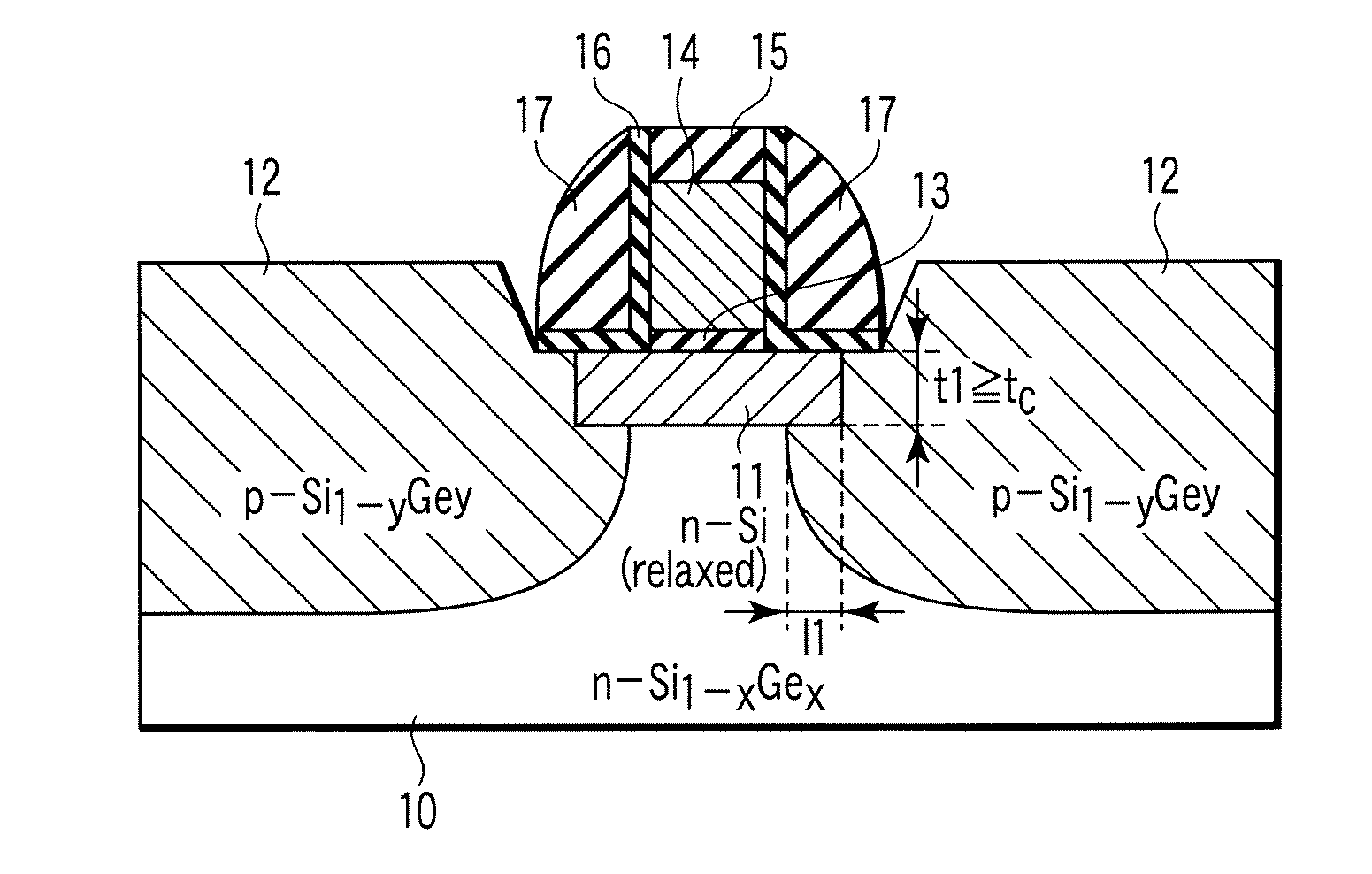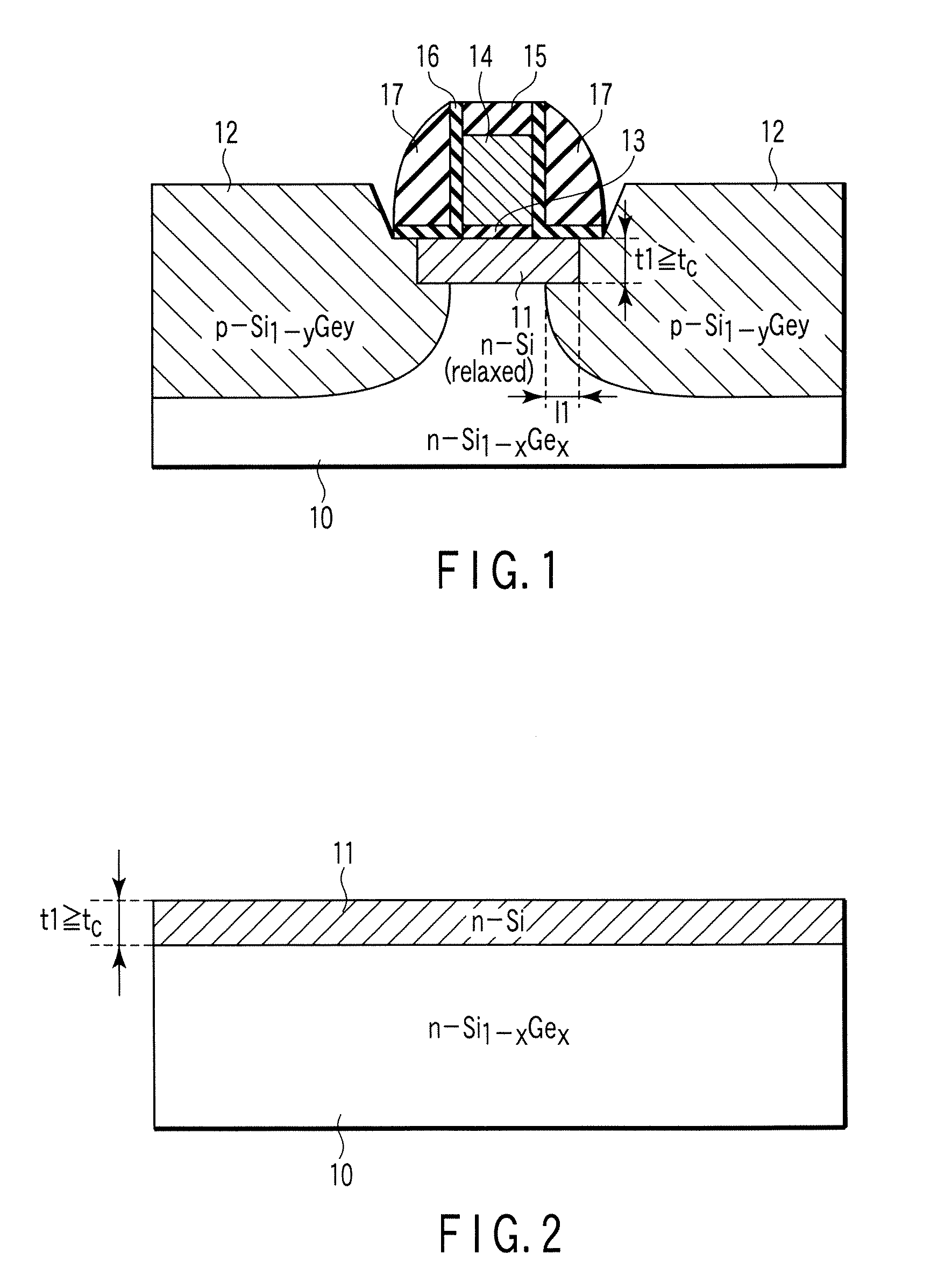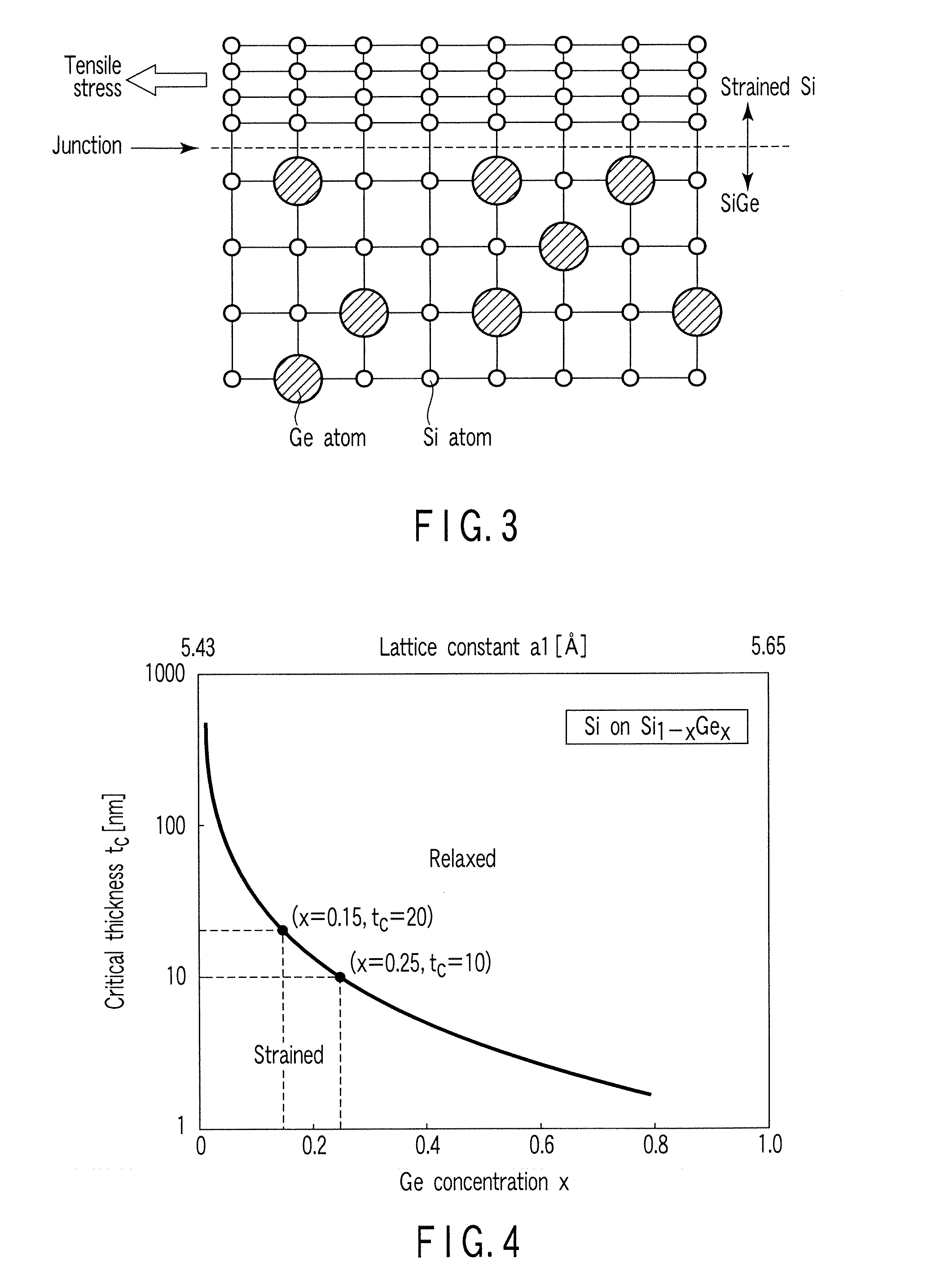Semiconductor device using sige for substrate and method for fabricating the same
a technology of semiconductor devices and substrates, applied in the direction of semiconductor devices, electrical devices, transistors, etc., can solve the problems of hard mask on the gate electrode eroded and stripped away, source/drain and gate electrode also may be shorted, and it is difficult to recess into the source/drain region
- Summary
- Abstract
- Description
- Claims
- Application Information
AI Technical Summary
Benefits of technology
Problems solved by technology
Method used
Image
Examples
first embodiment
[0051] A semiconductor device according to the present invention and a method for fabricating the semiconductor device will now be described with reference to FIG. 1. FIG. 1 is a cross-sectional view of a p-channel MOS transistor according to this embodiment.
[0052] As shown in FIG. 1, an n-type Si layer 11 is formed on an n-type Si1-xGex (x=a positive number less than 1) layer 10. A film thickness t1 of the Si layer 11 is not less than a critical thickness tc relative to the Si1-xGex layer 10. The critical thickness, in this context, is such a film thickness that if the film thickness of the Si layer 11 is set at tc or more, no strain occurs due to a lattice mismatching with an underlayer of the Si layer 11 (i.e. strain is relaxed). In other words, if the film thickness of the Si layer 11 is set at less than tc, strain occurs due to the influence of the underlayer. The thickness of the Si layer 11 according to the present embodiment is set at the critical film thickness tc or more. ...
second embodiment
[0105]FIG. 23 is a cross-sectional view of a p-channel MOS transistor. As shown in FIG. 23, in the structure shown in FIG. 12 which has been described in connection with the second embodiment, an SiC layer 50 is substituted for the SiGe layer 10. In this case, an Si layer 52 may be substituted for the SiGe layer 12. In the present structure, SiC having a smaller lattice constant than Si is used for the substrate 50. Accordingly, the lattice constant of the Si layer 20, which is formed by using strained silicon, is less than that of Si. Hence, a compressive stress can be introduced to the Si layer 20 by using SiGe and Si for the source and drain.
[0106]FIG. 24 is a cross-sectional view of a p-channel MOS transistor. As shown in FIG. 24, in the structure shown in FIG. 1 which has been described in connection with the first embodiment, an SiC layer 50 may be substituted for the SiGe layer 10.
third embodiment
[0107]FIG. 25 is a cross-sectional view of an n-channel MOS transistor. As shown in FIG. 25, in the structure shown in FIG. 13 which has been described in connection with the third embodiment, an SiC layer 60 is substituted for the SiGe layer 30, an unstrained Si layer 61 (with a thickness not less than the critical thickness at which the stress due to lattice mismatching with SiC is relaxed) is substituted for the Si layer 31, and an SiC layer 62 is substituted for the SiGe layer 32. With this structure, a tensile stress can be introduced to the Si layer 61 by the SiC layer 62 having a smaller lattice constant than Si.
[0108] Not only the SiC, but also GaAs is usable as material. In addition, a ternary compound semiconductor or a quaternary compound semiconductor, which includes In, Al, etc. in addition to GaAs, is usable. Besides, the SiGe layer 10, 30, which serves as the substrate, may be formed, for example, on an insulating film that is formed on a silicon substrate (SGOI struc...
PUM
 Login to View More
Login to View More Abstract
Description
Claims
Application Information
 Login to View More
Login to View More - R&D
- Intellectual Property
- Life Sciences
- Materials
- Tech Scout
- Unparalleled Data Quality
- Higher Quality Content
- 60% Fewer Hallucinations
Browse by: Latest US Patents, China's latest patents, Technical Efficacy Thesaurus, Application Domain, Technology Topic, Popular Technical Reports.
© 2025 PatSnap. All rights reserved.Legal|Privacy policy|Modern Slavery Act Transparency Statement|Sitemap|About US| Contact US: help@patsnap.com



